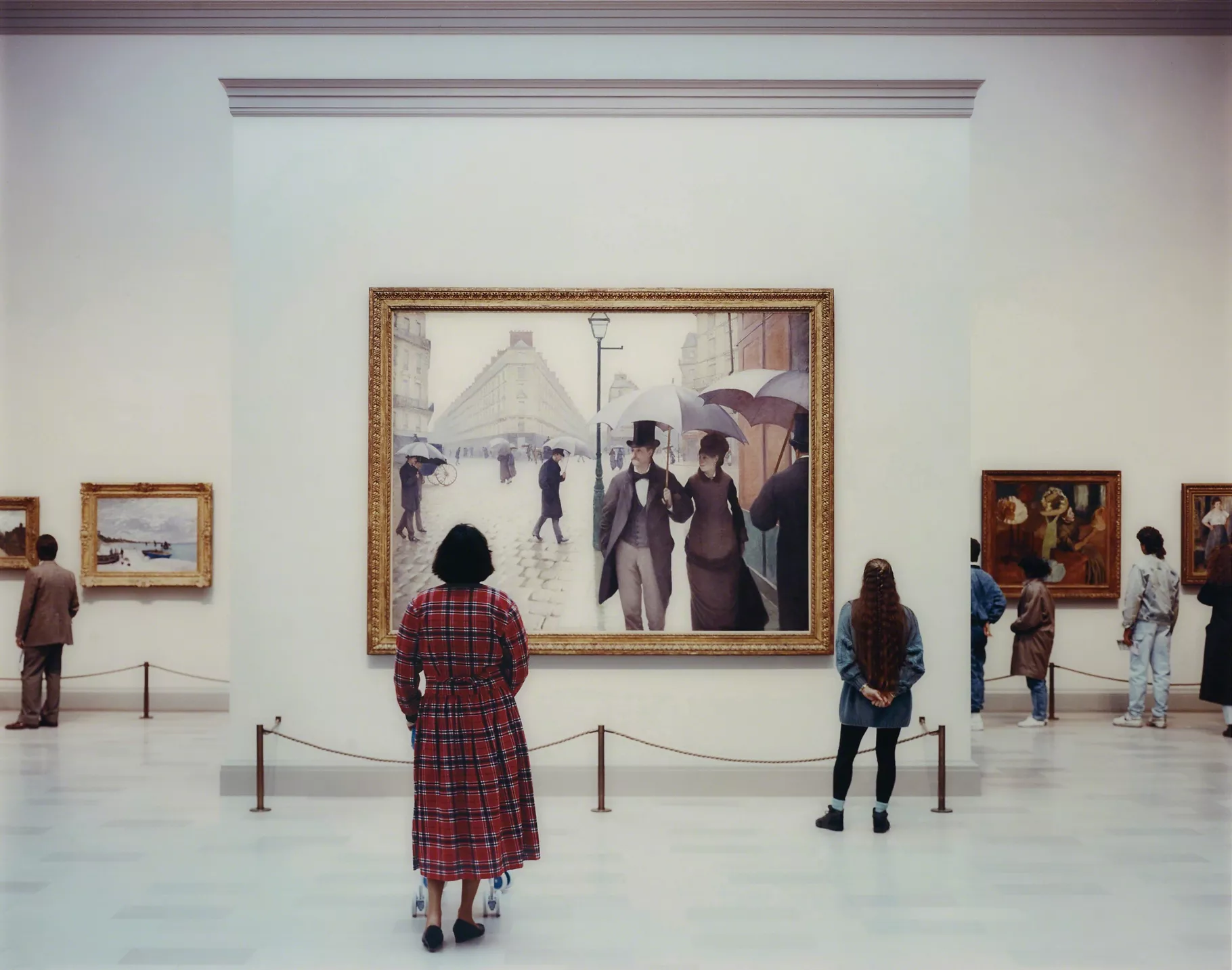
To say that I grew up with French Impressionist painter Gustave Caillebotte would be taking dramatic license, but perhaps not to such an extreme as one might think. Hailing from the Chicago suburbs, trips to the Art Institute of Chicago were a staple of my school experience. My parents, also art lovers, guaranteed that I was left to roam the halls of that institution several times a year.

I’ve gravitated to the nineteenth century galleries there for as long as I can remember. Walking up the Woman’s Board Grand Staircase felt like ascending into the rarified air of a different era, unlocked within the museum’s walls. And there, at the top of the grand staircase, unmistakable, ever-present, was Gustave Caillebotte’s Paris Street; Rainy Day (1877).
The painting — showcasing walkers on a rainy city day — captures everything modern about the time Caillebotte painted, including the new fashions and facades of Paris in the 1870s. Asymmetric, unusually cropped, and frankly quotidian, the painting asserts this same modernity. One of the Impressionists’ principal financial backers and patrons — he purchased his first Claude Monet painting in 1875 when the artist was beginning his career — Caillebotte was also an essential participant in creating a new approach to painting.

Recently, the Woodson Art Museum was fortunate to acquire its own work by Caillebotte. The artwork, entitled Three Partridges on a Table (ca. 1880), translates Caillebotte’s revolutionary approach to the traditional topic of game birds. The dramatic perspectives of his city paintings — the vertiginous upward slant of his boulevards and floors — are here repeated in the angularity of the table on which the partridges rest. These “tilting grounds” common to the artist were influenced by Japanese prints, all the rage in Paris at the time, and the emerging technology of photography. His cropped perspectives migrate from the city streets to the table, truncated at both edges on the right-hand side of the canvas; the final partridge’s feathers are snipped neatly at their end. Lustrous blue-grey umbrellas tuck themselves in to form the tight cylinders of the partridges’ bodies, while a few spare feathers lead our eye back into the composition, just as the many walkers in Paris do. Compared to another work from the Woodson’s collection, Richard La Barre Goodwin’s traditionally lovely still-life, A Pair of Woodcocks, painted in the same year as Partridges, Caillebotte’s insistence on a new approach to painting — whether of the city street or kitchen table — is apparent.

As for myself, I’ll be appreciating having another chance to visit regularly with Caillebotte, now hung in the New Acquisitions area here at the Museum.
